Brandiss Pearson, with son Shaun Jackson, attended the Civilian Police Academy in January to learn how her black, teenager should react if approached by a police officer.
"Citizen Academy" offers everyday people a taste of what it's like to be a cop
Five participants share largely positive takeaways from a 3-day January session


written by:
Jasmine Gomez


photography by:
Kathleen Flynn
ALSO FIND:
> Audio from four academy participants
> How SPD’s simulated exercises test officers both mentally and physically
Through education and simulation, police departments around the country are attempting to give citizens a small taste of what being a cop can be like.
They host “Citizen Academies” that offer a “behind-the-scenes” look at how police operate, the laws that govern what they do, and the difficulty of making decisions in high-stress situations, like distinguishing a fake gun from a real one or pinning down a suspect resisting arrest.
In a particularly tense time for many police departments and their local communities, it’s a tool to make things better and a way to generate conversations about controversial uses of force by police.
In January 2017, the Syracuse Police Department invited local activists, media representatives, and other community members to participate in a free three-day “Civilian Police Academy.” It included exercises that allowed participants to experience stressful simulations requiring quick decision-making. The event was attended by about 40 community members who had an interest in the inner workings of the police department. The Syracuse Police Department says it plans to host another Citizen Academy.
The event was eye-opening for some, building the empathy police had hoped for. Others said questions remain unanswered.
Here are the takeaways of five participants.
Tim Boehlert: Retired security officer
“I think what we’ve seen in the national media over the last at least three years has been very disheartening because I respect law enforcement and I think it’s an extremely hard job. Knowing what I know now after putting in almost nine years of doing some of what they are expected to do, I’m a lot more empathetic to them. I think a lot of what I’ve seen, the way I’ve interpreted it has just been bad journalism, wrong journalism, and journalism for the sake of creating a revenue in some way.”
WHY HE WENT
As a security officer at a hospital, Tim Boehlert spent almost nine years encountering some of the same people police run into in their work. During his detail, Boehlert often dealt with people “on the edge” as a result of mental health issues, recreational drugs, or other events that resulted in their trip to the psychiatric department.
Boehlert has been kicked, punched, spit on, and stabbed, but he said he was never equipped with the tools necessary to deal with uncontrollable people or dangerous situations, tools that all police officers acquire in their own training. He attended the academy to learn how police deal with those types of situations and handle the immediacy of a threat. Boehlert feels police officers often get a bad rap in the media; he said he wanted to learn enough to correct some of the nonsense he sees about cops as a result of “bad journalism.”
WHAT HE GAINED
Boehlert saw the Civilian Academy as a great attempt by the police department to reach out to the community. He says police are often misunderstood because people don’t know the laws governing what cops do or appreciate the pressure they’re under making split-second decisions. “To me, going to the academy was eye-opening in many aspects because I had no idea what the laws were, what the rules are that they follow. As a civilian you don’t necessarily act or think on those premises, and they do.”
Boehlert feels the event provided an opportunity for police officers to show that they have more in common with the community than some may think.
“They have families, they are people, they are not robots and they have standards that they are held to,” Boehlert said. Boehlert thought the event helped alleviate some community members’ hostility through discussions and insights into the difficulty of the job. “They (cops) don’t have the choice that you and I do to walk away and say, ‘Well, maybe the police will show up,’ ‘Maybe somebody will stop it.’”
“They (cops) don’t have the choice that you and I do to walk away and say, ‘Well, maybe the police will show up,’ ‘Maybe somebody will stop it.’”
The civilian academy moved Boehlert to write a 40-page reflection discussing his experiences at the event and some of the case law governing how police operate.
WHAT WAS MISSING?
Boehlert wishes the event was more in-depth but he understands the time and financial constraints involved. And he said more opportunities for group work would have allowed more discussion and insight into differing points of views.
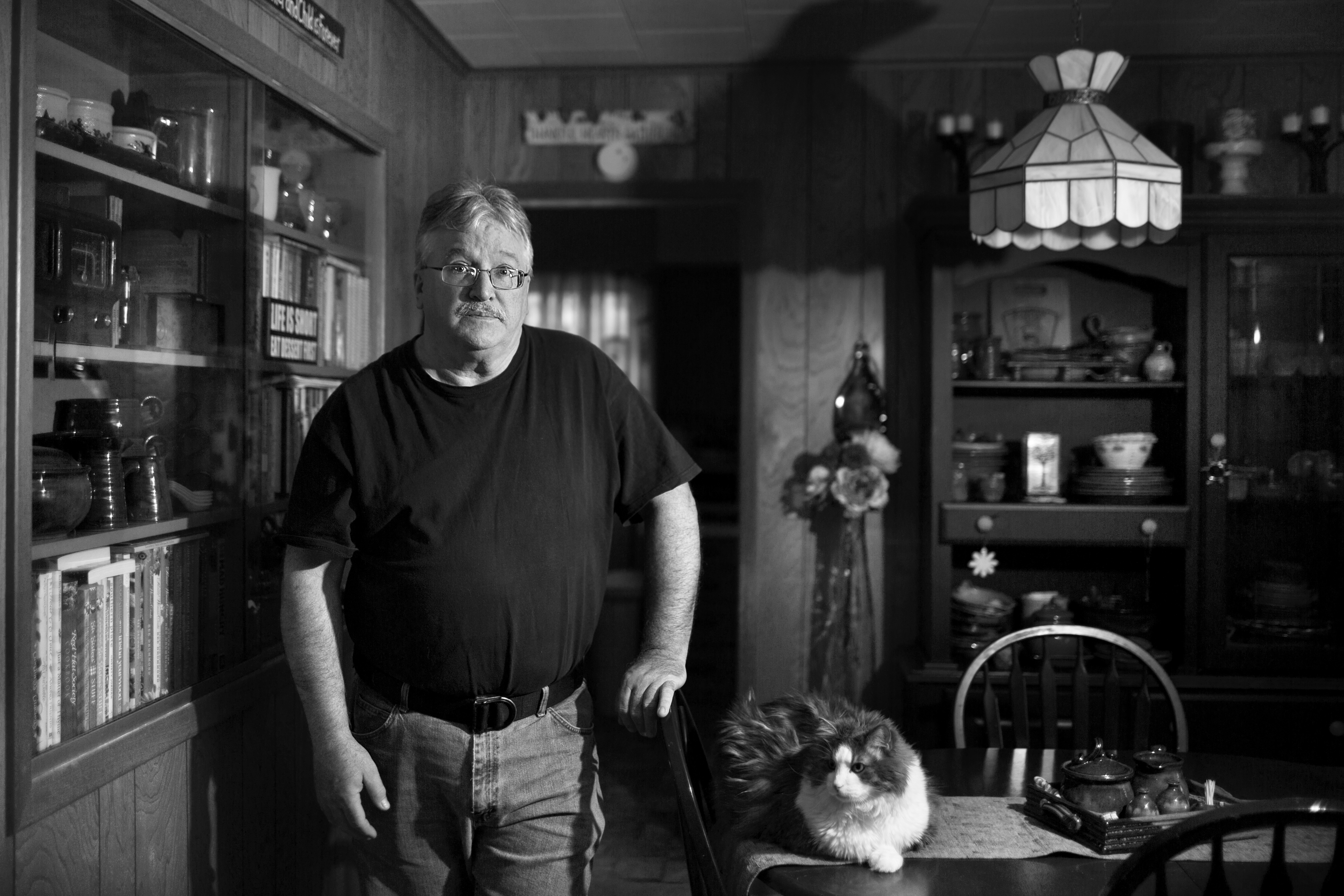
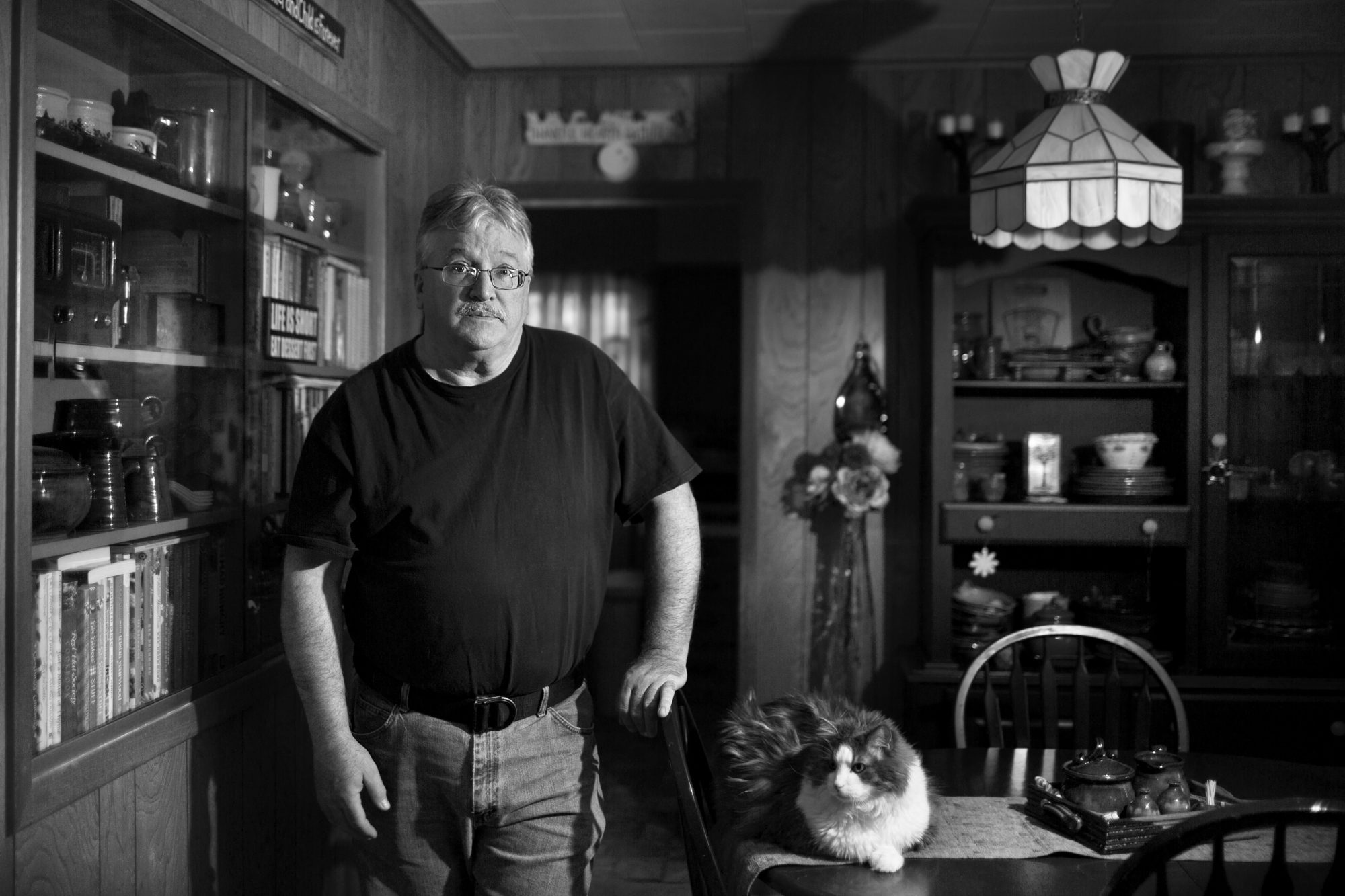
Retired Security Officer Tim Boehlert attended to learn how officers are trained to handle individuals with mental health issues, in a drug-induced psychosis or in crisis.
Brandiss Pearson: Nurse
“My son is not an at-risk youth. He has a job, he goes to school every day, but my fear for him is that he will encounter a police officer for something unwarranted and not know how to navigate that situation.”
WHY SHE WENT
Brandiss Pearson is married to a corrections officer, with a 16-year-old son who she said bears a resemblance to Michael Brown, the teen who was slain by a police officer in Ferguson, Missouri. Her husband and son have differing views toward the police. “I just wanted to be able to go and get an unbiased look at what law enforcement actually has to deal with so I could take it back and help bridge the gap between my son and my husband,” Pearson said. While her husband is supportive of police, her son’s intimidated by them and holds a less favorable view.
Pearson lived in a public housing complex in Syracuse for 10 years and has seen firsthand the tensions between the community and police. But Pearson has also had many positive interactions with her local police force. Her uncle is a retiree of the Syracuse Police Department and officers have often positively engaged with her other teenage son, who has Down syndrome.
WHAT SHE GAINED
Pearson found the event eye-opening regarding the stress police officers undergo. “They put us in scenarios that were actually rather benign but in real-life could be life-threatening for a police officer,” Pearson said. “It gave us an opportunity to really see how difficult it is for officers to make decisions in the blink of an eye, whether it’s their life or the person’s life in front of them.”
“They put us in scenarios that were actually rather benign but in real-life could be life-threatening for a police officer,” Pearson said. “It gave us an opportunity to really see how difficult it is for officers to make decisions in the blink of an eye, whether it’s their life or the person’s life in front of them.”
The event helped Pearson to realize police officers have to play whatever role the job demands, including a counselor or psychiatrist.
WHAT WAS MISSING
Pearson said she wishes the event would have been open to her 16-year-old son, but SPD said it was adults-only.
And she said her anxiety still lingers. Though she wants her son to be able to rely on the police, she fears for him because he is a big man already (6-2, 260) and fits the description of many of the men in high-profile police shootings. “How do I teach my son who is afraid of his own shadow, still sleeps with his prayer bear he got when he was a baby, how do I teach this kid how to navigate walking to school and fitting the description?” Pearson asked.
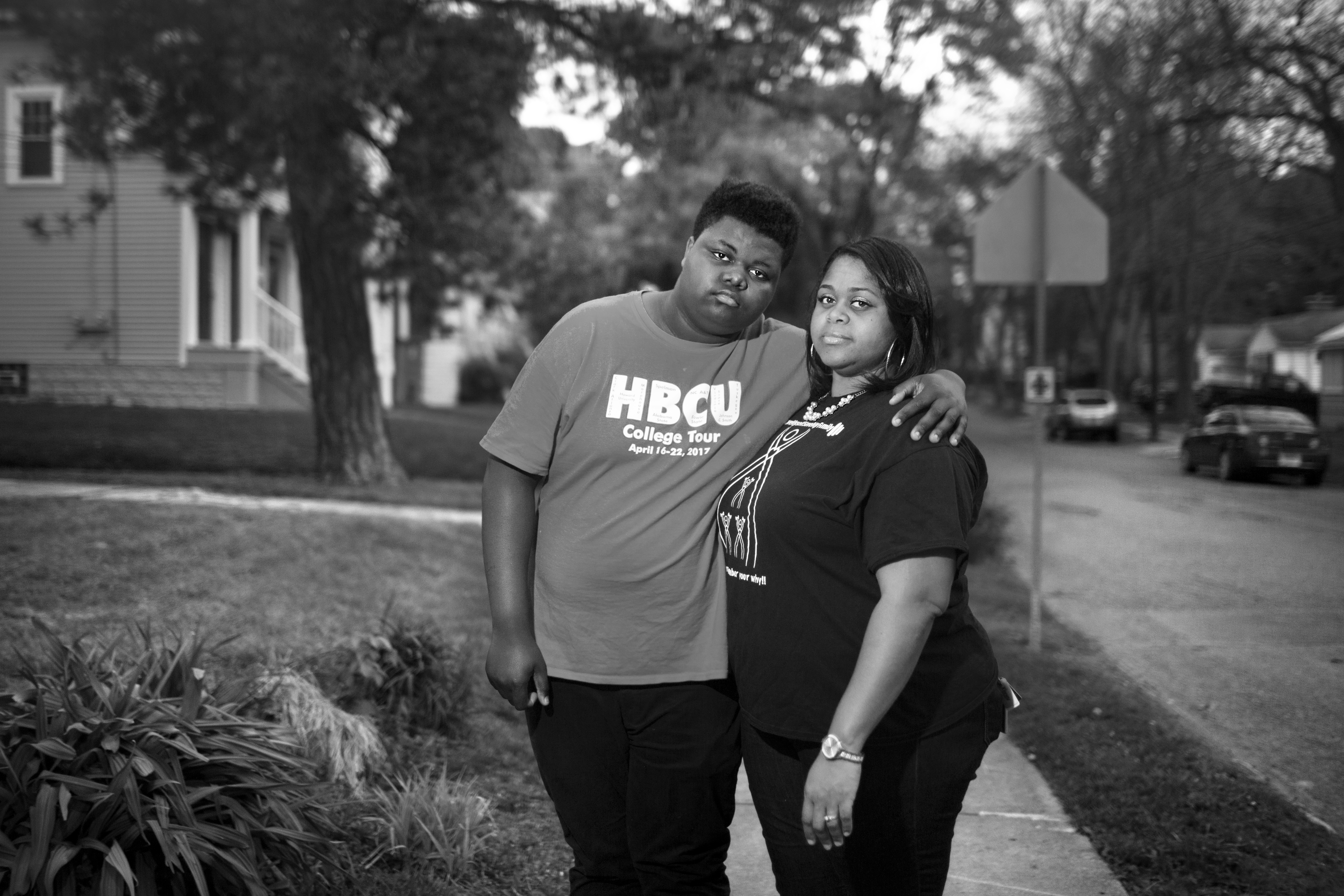
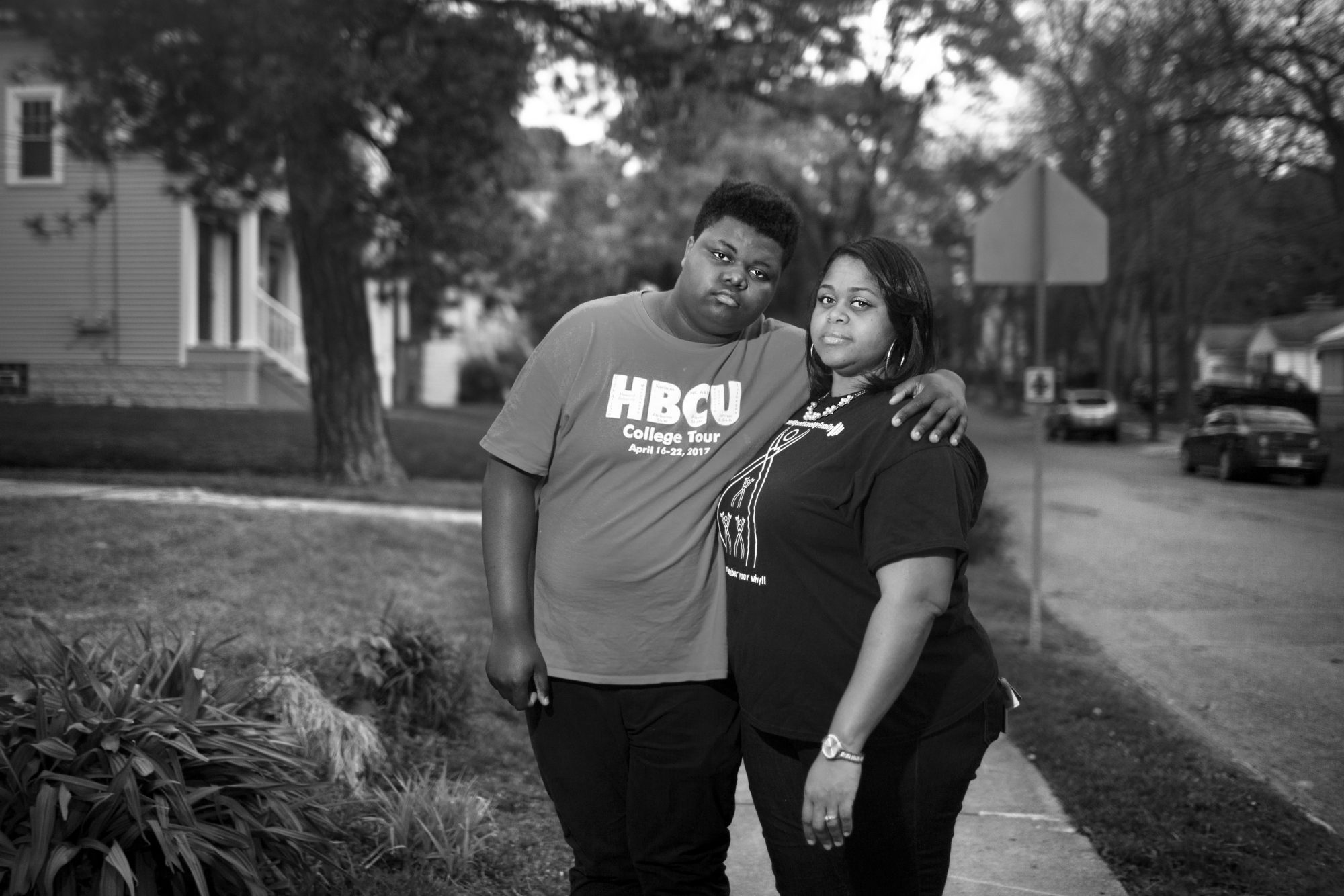
Brandiss Pearson, with son Shaun Jackson, attended the Civilian Police Academy in January to learn how her black, teenager should react if approached by a police officer.
Jerome Griffin (retired): Martial arts enthusiast and neighborhood activist
“If I was stopped by a cop, my first image was, ‘I’m in trouble. I’m black, I’m older, I’m not going to get a fair shake,’ and I didn’t get that image from these guys (SPD). I saw people. I saw guys with families. I saw guys who put their pants on one leg at a time as I did. It’s just they have a job to do.”
WHY HE WENT
Jerome Griffin went to school in the Bronx in the 1970s, when he said tensions between police and the community were even worse than they are now. He said police were corrupt and unreliable.
“You couldn’t distinguish between the cops and the criminals, really,” he said. Griffin’s opinions of police changed when he moved. “Coming to Syracuse, the police wasn’t just beating on you just to beat you. When you called 911, someone did respond. A public servant wasn’t someone you had to pay to help you.”
He attended the training out of pure curiosity about how the SPD operates.
WHAT HE GAINED
For Griffin, the academy really helped to humanize the cops, since he saw the officers there as people, not just guys in blue suits.
“I saw very courageous people who did not only their job, but they have to go home at night. They punch a clock and I never really had that image before.”
“I saw very courageous people who did not only their job, but they have to go home at night. They punch a clock and I never really had that image before.”
The academy also gave him confidence to know people are out there protecting the streets where his grandchildren and family members walk every day. He knows his family can count on an SPD officer, Griffin said. For him, the academy shows the SPD is extending an olive branch to the community. “They’re trying to work with people, and that’s a big thing.”
WHAT WAS MISSING
For Griffin, the only thing missing is follow-up from the event from both sides, to keep closing the gap, to keep building on what was presented. He said he suspects that would build trust and help officers do their job a lot better.
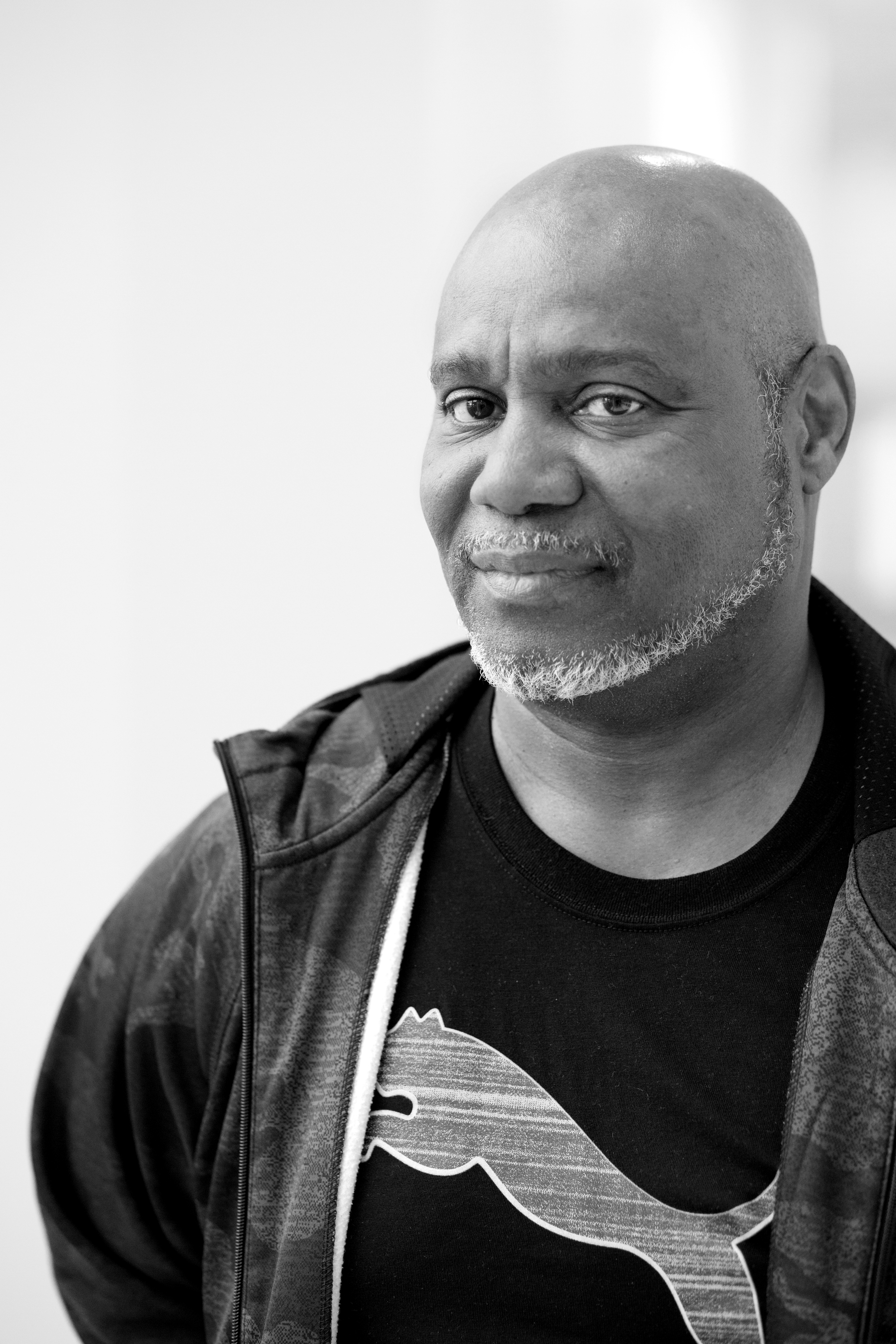
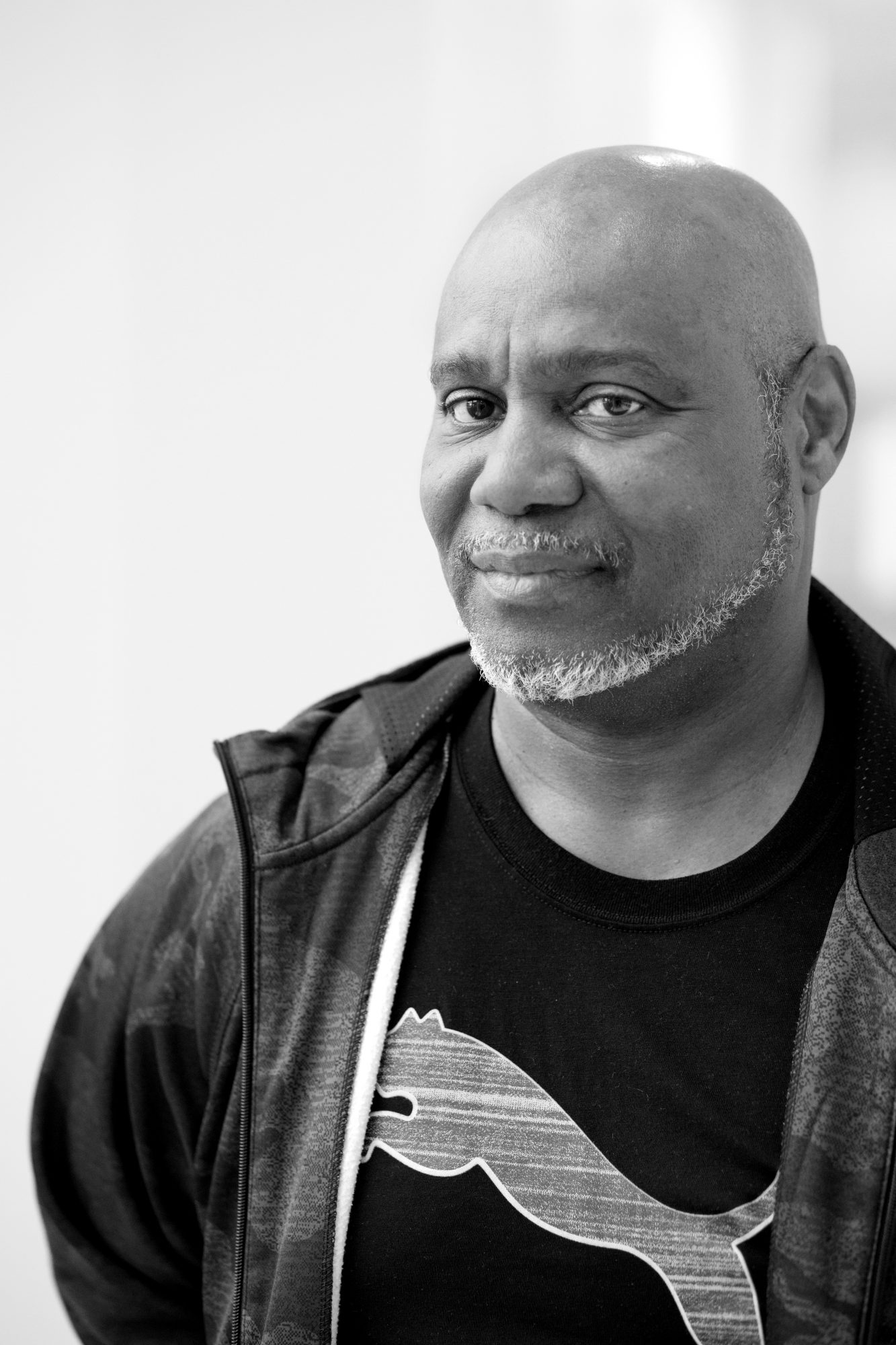
Martial arts enthusiast and neighborhood activist Jerome Griffin attended out of curiosity.
Amalia Skandalis: Arts teacher,
local activist
“You need to empathize and see why your community is feeling this way. They’re not feeling this way because of justified moves. They feel this way because of unjustified moves, when there’s someone with an open-carry permit getting shot in his car in front of his kids, when there’s a guy that was choked to death with a guy on his neck saying, ‘I can’t breathe.’ There’s certain things that have happened that have caused a lot of anger in the community.”
WHY SHE WENT
Amalia Skandalis is a local activist who has participated in Black Lives Matter events and has advocated for the local school district. She says the police department has been working to engage more with the community, and she attended for an inside look at being an officer.
WHAT WAS GAINED
Skandalis said the event was an educational experience; she learned about the laws ruling police use of force, something she said others need to know. She got a better understanding of the need for more legislation. Skandalis said participants put on police gear and went through some of the stress-inducing scenarios officers face, and that helped her gain a somewhat sympathetic view toward police.
WHAT WAS MISSING
Skandalis feels that the SPD did not really engage in much conversation about current events and the role of race in police-community interactions. There was no back-and-forth dialogue, and her concerns remain about unjustified deaths due to police brutality.
“That level of the conversation didn’t really get engaged. We didn’t look at the different ones like Alton Sterling or Philando Castile and those types of death,” Skandalis said. “It stayed more educational, more to the point.”
The opportunity to ask more questions would have made the event better, Skandalis said, but it was a good attempt by the police department to engage, she concluded.
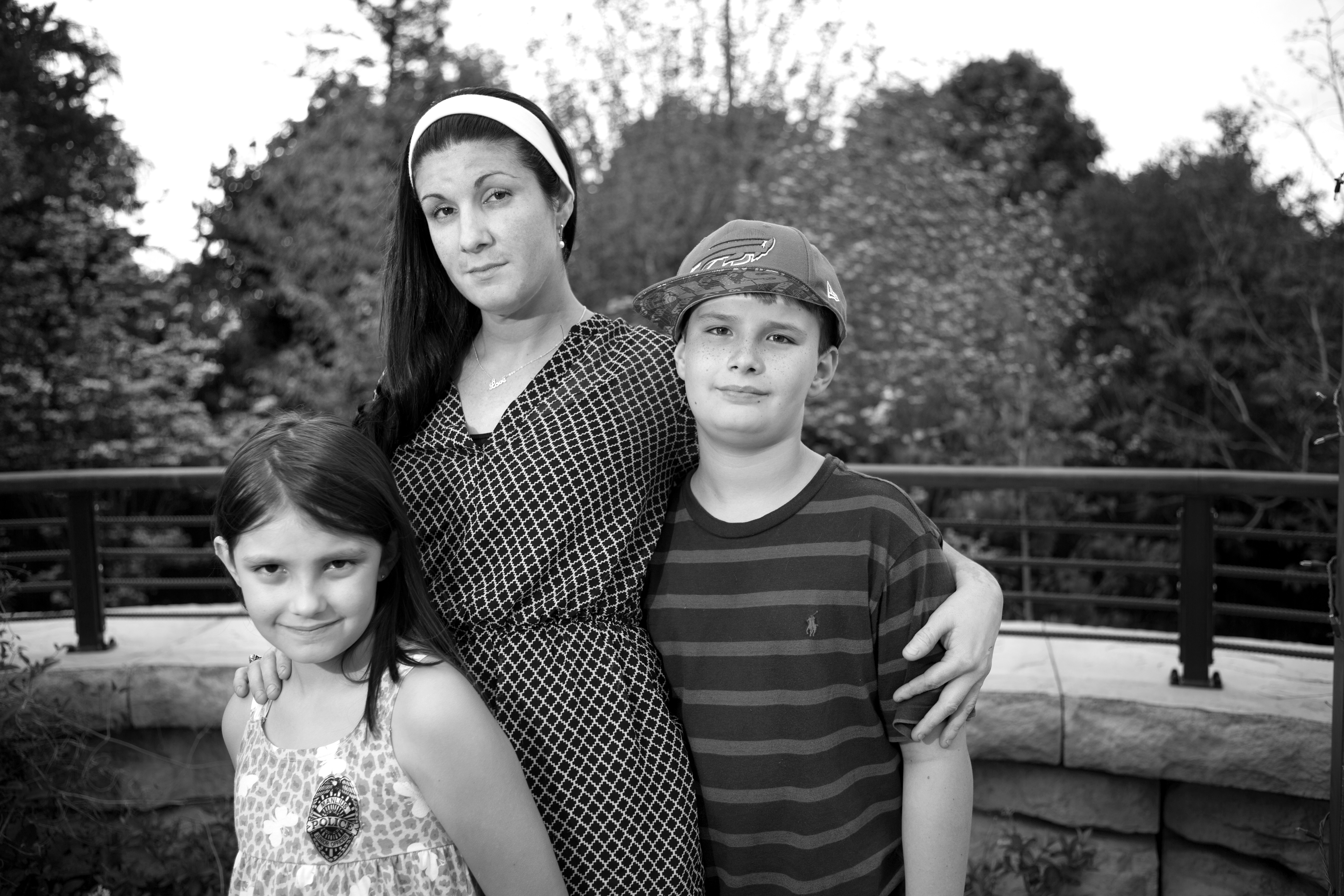
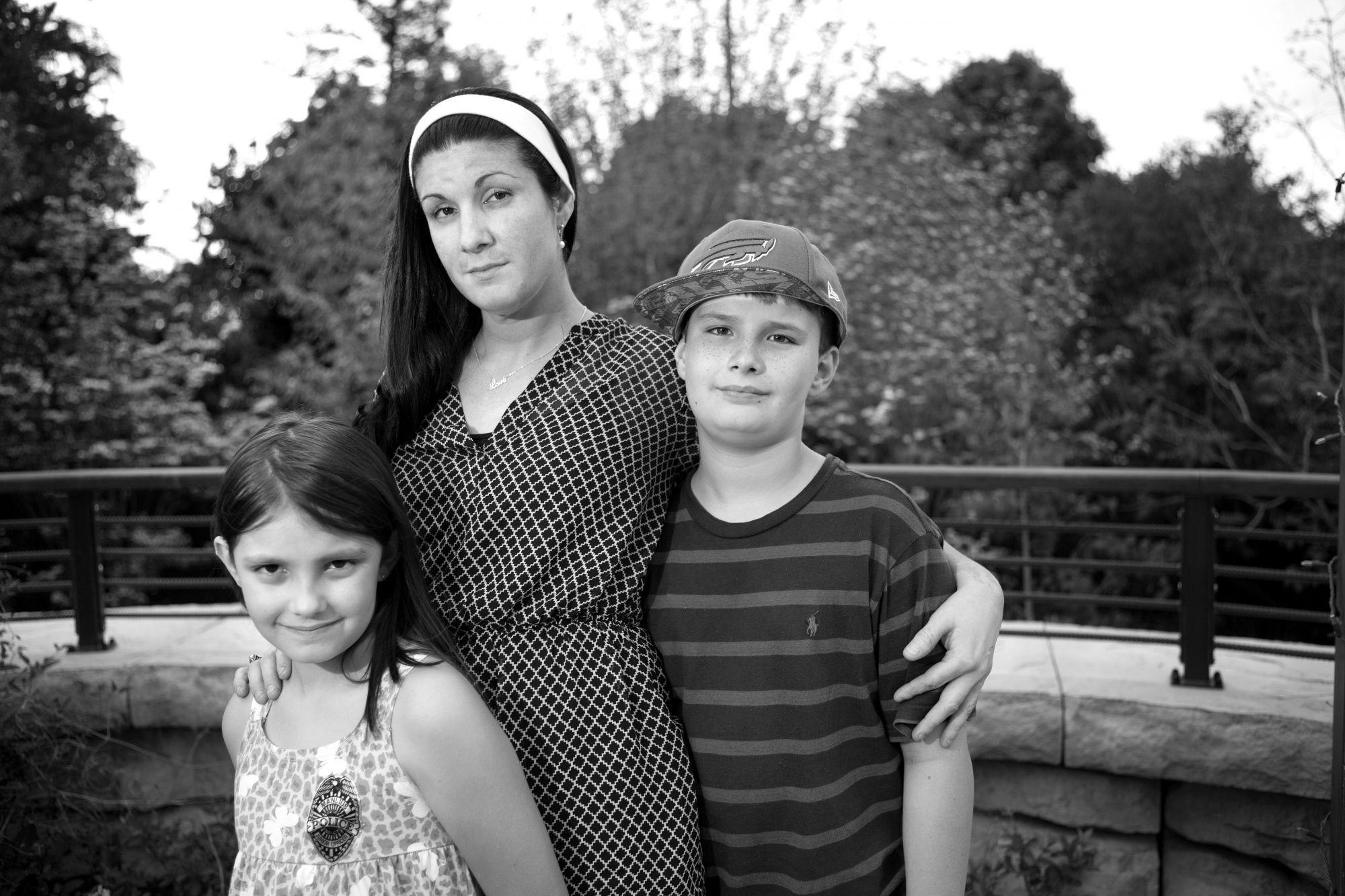
Arts teacher and local activist Amalia Skandalis, with her children Teah, 7, left, and Niko, 9, attended to gain a wider perspective.
Nicolina Trifunovski: Employee
at National Grid
“You have the police and then you have the community. Both sides want the other side to see where they’re coming from, but it’s almost like this: It’s like everybody’s saying, ‘Let’s have a conversation,’ but the conversation must include that you basically fall in line with where I stand.”
WHY SHE WENT
Nicolina Trifunovski wants to be a part of the group that brings the conversation between police and community to the table.
“I can’t seem to get people who are very hard-lined on one side or the other to understand the other side so it’s basically you’re either ‘A’ or you’re ‘B.’ Nobody wants to see that there’s another option and that we can all come together and find common ground to work on this, so it’s been difficult.”
Trifunovski has tried to empathize with both the police force and the local community. While she respects the job of a police officer, Trifunovski said there are conflicts that haven’t been resolved.
“The issue is that the good cops are good, but they’re also standing up for or they’re protecting bad ones and they’re not doing enough to weed out guys who are putting a bad name to everybody,” Trifunovski said. She has had experiences where law enforcement officers have been disrespectful to her. On the other side, though, Trifunovski feels there is also no budging from the community and it is often difficult to even talk to some community groups that are unapproachable.
WHAT SHE GAINED
The academy allowed Trifunovski to get a deeper understanding of how difficult the job of a police officer can be and how complicated the discussion about police and community relations actually is. Trifunovski also felt the Civilian Academy was a beginning to chip away at an iceberg.
WHAT WAS MISSING
Trifunovski left with many unanswered questions and said the conversation about why people of one demographic are dying at the hands of police at a greater rate than other demographics was not addressed.
“The evidence is suggesting that this exists, that unfair, unequal treatment exists by police. They acknowledged these things happen, but we didn’t talk a whole lot about that important conversation,” Trifunovski said.
“The evidence is suggesting that this exists, that unfair, unequal treatment exists by police. They acknowledged these things happen, but we didn’t talk a whole lot about that important conversation,” Trifunovski said.
For her, the conversation was more of a presentation about the police point of view, and that more is necessary in order to have these difficult conversations. They’re trying, but more could be done, Trifunovski said.
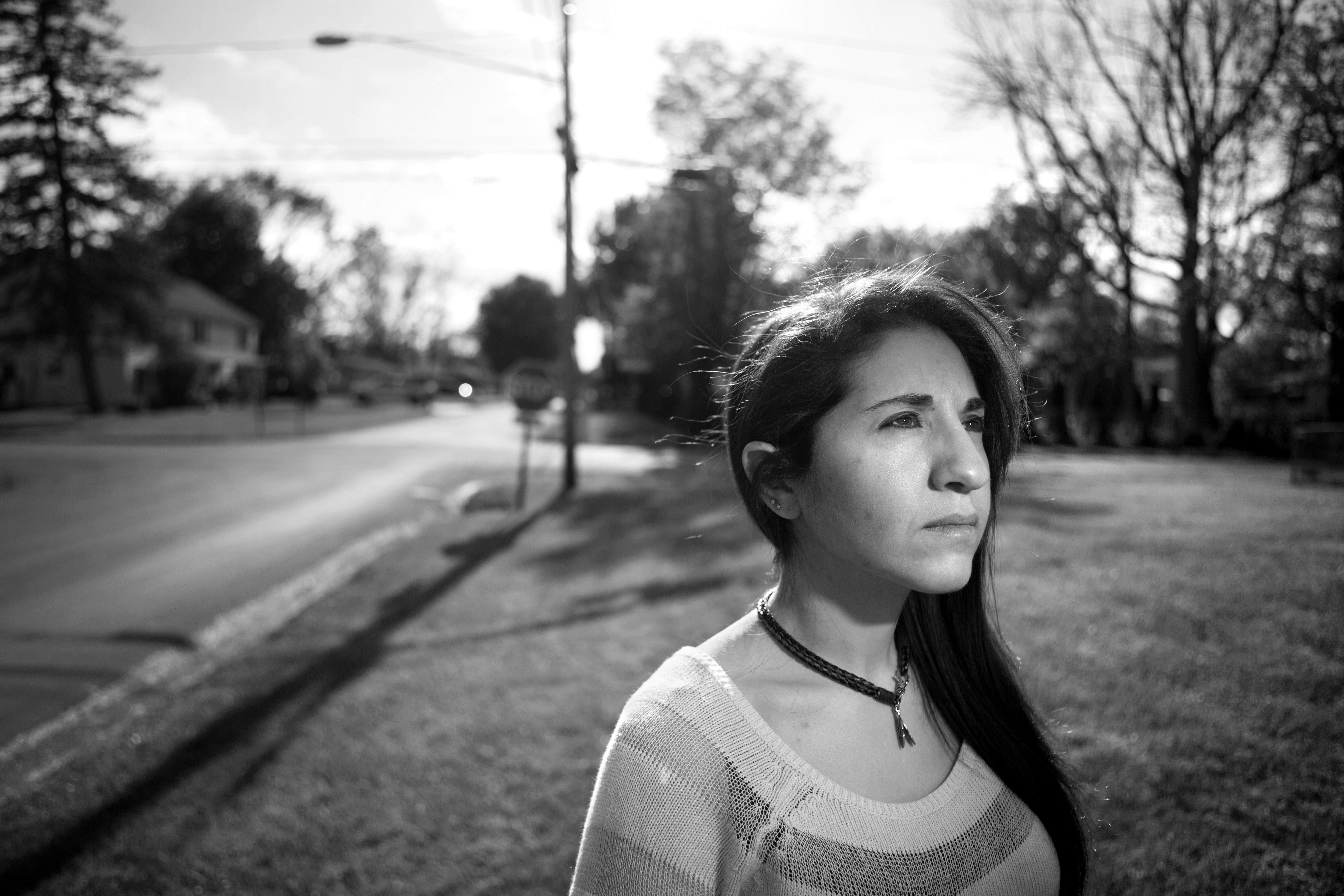
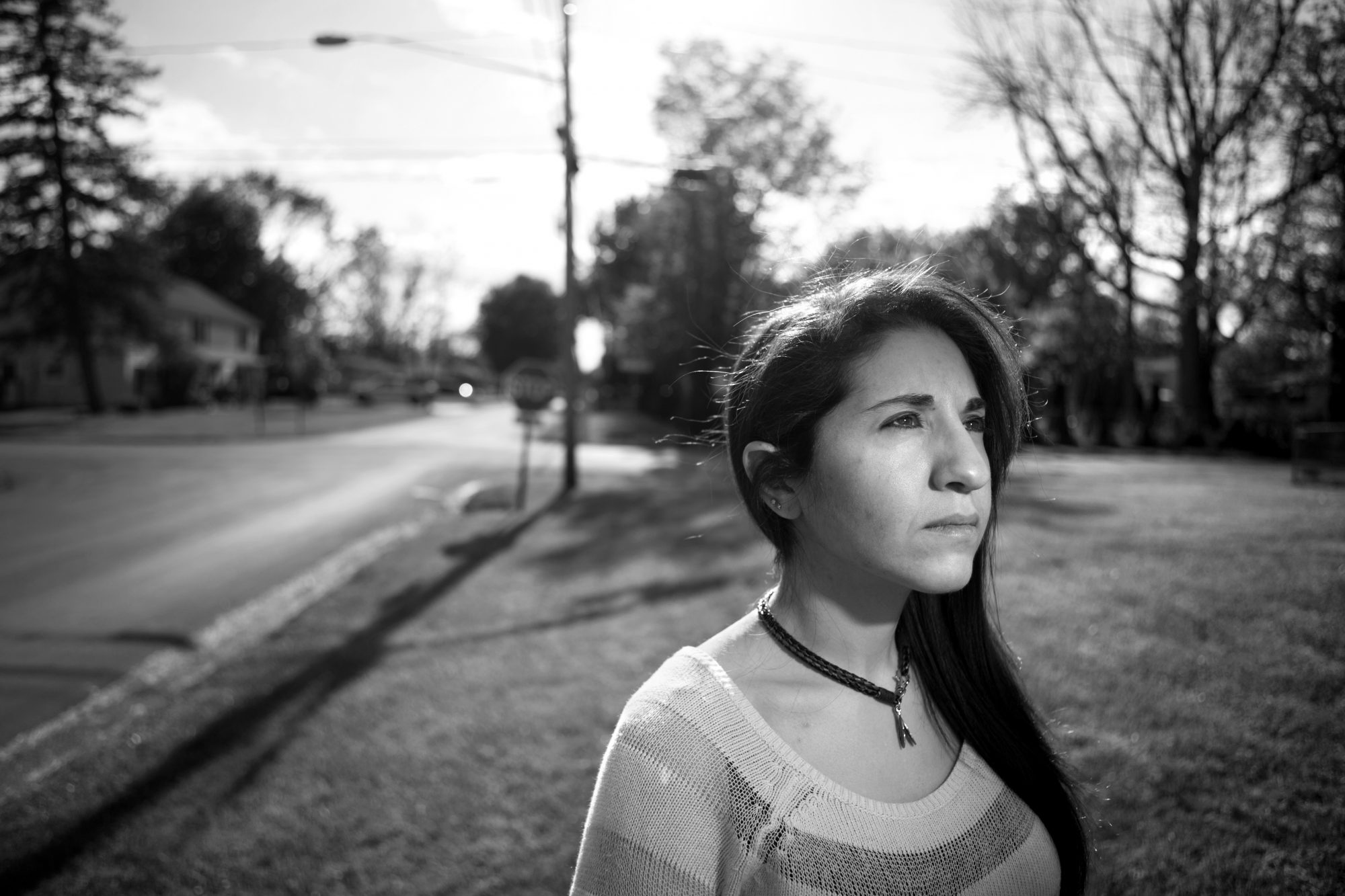
Employee at National Grid Nicolina Trifunovski attended to be a part of the conversation.


Academy covers much — but not all
"What do I tell my son?" Mom's still not sure ...


written by:
Ashley Kang
The Syracuse Police Department’s three-day, 10-hour civilian police academy in January gave 40 community residents some idea of what it is like to make split-second decisions on when and how to use possibly deadly force, and provided the group some legal background, too.
It answered some questions for them, and still left them with some.
Police Chief Frank Fowler told attendees the academy is designed for residents to better understand how police are trained to respond. “You will be exposed to the same training as our recruits … and also (learn) how and why we do the things we do,” Fowler said. “Our goal is for you to leave with a more educated eye.”
At the start, officers also said they feel current news coverage of police is negative and centers around use of force. The media has “magnified the bad news,” Fowler said. “But tonight, you will all go home and sleep safely because of these men and women.”
The first night opened with lectures on the laws that govern the SPD, taught by Sgt. Derek McGork and Det. Mark Rusin. The second and third evenings included reality-based training exercises, from how to restrain a protester to encountering an individual wielding a gun.
Brandiss Pearson, a nurse and mother, spoke up as a parent of a black teenager. She said she is concerned daily about her son’s safety. “Having a 16-year-old black son who is 6-foot-2, 260 pounds,” she explained, “he fits every description.”
Her greatest fear: Her son mistakenly identified as a suspect and targeted because of a snap judgment made by an officer. As a mother of two teen boys and wife to a corrections officer, she said she has a wide perspective but still can’t shake her fear. One reason she participated was to learn what her son should do if approached by an officer. “If he’s ever stopped, what do I tell him to do?” she asked.
McGork noted that officers are taught that race can’t be part of the equation, explaining in legal terms that race and gender are not “articulable facts.”
“So it would always be improper to ID a suspect solely on race,” he said. Officers must use a more accurate description such as tattoos, scars, specific clothing – not just a black male, tall and heavy-set. Rusin later clarified that courts have determined race and gender are not reasonable factors, but descriptions like size, height and weight are.
When describing what police refer to as “investigatory stops” – which many equate to the now- ruled-unconstitutional New York City stop-and-frisk tactic – McGork said the purpose is to preserve safety and minimize crime. McGork explained that the more information or suspicion an officer has, the more intrusive an officer can be (People v. DeBour). “But we’re not often great communicators,” he conceded of police officers. “I think many times we could do a better job at explaining why and what we are doing.”
But if there is a time constraint because of immediate concern for public safety, some details could be withheld by police and an officer’s actions could become more forceful. Clifford Ryans, who is with O.G.s Against Violence and a member of the city’s Citizen Review Board, told the group that once he was told he “fit the description” of a robber and was pulled over by an officer. “Actions of officers would depend on who made the tip and how detailed the description was – is there reasonable suspicion?” McGork said. “The officer has to make that determination.”
One attendee suggested that if students wore school uniforms, officers could recognize them as a non-threat. Another muttered that the logical deduction is that the teen would be stopped because of an officer’s unconscious bias.
“This is something we teach,” McGork said in reference to stereotyping. “It is improper to base on race, because race can’t be part of the equation.”
“This is something we teach,” McGork said in reference to stereotyping. “It is improper to base on race, because race can’t be part of the equation.”
McGork’s closing thought: “As an officer out on patrol, I know that 139 cops were killed last year. I don’t want to be number 140.”
The compelling question posed by the mother, Pearson, left a division in the room. Her plea for something she could instruct her son to do, something to possibly spare his life if he were stopped by an officer, fell flat as the sergeant tried to convey how a cop approaches the same situation with an equal level of fear.
One citizen participant, pastor Antwan Chavis, concluded: “But when approached by a police officer, the kid is thinking: ‘This may be my last day alive.’”
The familiar scenario was not addressed again until the second night, when Pearson posed the same question to Rusin.
Rusin said he impresses upon new recruits that they are acting as extensions of the law and must be apolitical and remove all prejudices. “You (police) have to go into a citizen encounter knowing that someone may have this initial assumption or fear of you,” he said. “So our demeanor should always be professional; we stress this in our training.”
Later, Rusin was asked about dealing with people with mental health issues and who have conditions such as autism. He said training is the key, again, and commented that he has two young nephews with autism who hate to be touched. He described much of policing as observing and reading cues. SPD recruits do a week of training on mental health, he said, and the issue overlaps into other portions of instruction as well. In total, he said training focused on mental health issues runs close to 80 hours.
Additionally, Rusin said the state requires seven hours of use-of-force training for new recruits. However, because SPD sees this as vital, he says the department does closer to 70 hours of training. New recruits are also required to take implicit bias tests to measure attitudes, stereotypes and other hidden biases that can influence perception, judgment and action.
Chavis posed one more question, asking Rusin if he personally thought police brutality is happening locally.
Instead of answering, Rusin posed the question back to guests: “What might I base my answer on?”
Someone answered: “Data.”
Rusin responded: “But data doesn't always meet perception.”
As an example, he discussed how many people use Facebook as a news source and noted that video shot on cellphones often only shows a narrow view of an incident.
So what gives an officer the right to use force? In New York state, it’s Article 35. This statute outlines the rules and regulations referring to the use of physical force and deadly physical force based on what an officer believes necessary. To teach recruits what is deemed necessary, Rusin says, it starts with review of laws and court cases, plus scenario trainings.
In the final two days, participants could volunteer to try different practical exercises – fighting off someone with a knife, responding to disorderly calls with unknown outcomes, even working in a team in an active-shooter scenario where participants maneuvered through a portion of the jail. Critical decision-making was required to determine if the citizen-now-cop needed to simply calm someone down with talk, hold someone off until backup could arrive or draw a gun, using deadly force. For some, it was shocking to see the quick reaction time required to complete the simulation correctly.
Officers explained that they may have several minutes to hold off an attacker before backup can arrive. Most simulations at the academy lasted only 60 seconds, showing the physical exhaustion that can set in after a short time. Participants were also reminded to observe their surroundings, never knowing if someone might have a cellphone pointed at them or if an additional attacker could be lurking out of sight. One officer noted: “There’s many people angry at the uniform right now.”
The new norm, Rusin says, is training, including understanding different cultures. He noted that Syracuse has many refugees. “Train, train, train,” he said. “Train on how to interact and work with cultural differences.
“Train on how to interact and work with cultural differences."
“Training is the fluid movement of the police department.”
BACKGROUND
This was the second civilian training class the SPD has offered and was advertised to also include discussions of recent high-profile incidents involving deadly force, though few well-known cases were mentioned. Instead, examples centered around undated videos showing incidents when officers had to make split-second decisions based on limited information. One example had officers being led on a high-speed chase after a traffic stop escalated, and in another responding to a disorderly call when the subject had ingested drugs. Out of 400 applications, the department chose 40 participants, who included local attorneys, pastors, former Army/Navy personnel, teachers and social workers, two members of the Citizen Review Board, one firefighter and local activists.
TRAINING SCENARIOS
Participants in the Civilian Academy took part in a number of scenarios to get a sense of what it’s like as an officer responding to high-stress calls.
Disorderly Conduct
The first encounter placed participants in pairs on a disorderly conduct call. They wore a police duty belt with a simunition weapon, a nonlethal training gun. Before entering the scenario, all they know is the individual is agitated. When they enter, the 6-foot-9 male is shouting in a Slavic language and using exaggerated body gestures. He reaches into his back pockets, first pulling out a card he tries to push into the participants’ hands. Some participants immediately pulled their guns. Others used calming hand movements to try and appease the man. Some are able to read the card, seeing that it said in English: “I only speak Bosnian, please call my relative...” For those who pulled their gun, the man reached into his pocket a second time, to further test how they would react.
Tense Standoff
On this call, the participant pairs were told they were being sent to a residence where an individual has pulled a gun. This scenario tested individuals’ critical thinking skills. The pairs were not informed if anyone else was in the home. When the pair went in, the individual was either sitting with a gun in his hand or the gun was on the ground at his feet. Many of the pairs tried to talk him down, encouraging him to put down the gun or kick it toward the officers. One team went in and tried to get quite close to him, later sharing that they were trying to see if anyone else was there and in danger because a back corner was partially screened off. As the scenario progressed, the individual yelled out demands: “Leave or I will shoot myself.” Participants were often hesitant to react. As time elapsed, tension would grow, progressing from him holding the sim gun to his head to pointing it at the officers to test how they would react. In one instance, the pair pulled their guns after the individual put his own weapon to his head. When he told them to stop, they froze but continued to point their guns at him. The individual told them to leave or he would shoot each of them and then himself. They continued to hold their spot, pointing their guns. In the end, all fired, resulting in three injured or dead.
Lipstick Knife
In an effort to make this scenario as life-like as possible, participants put on a clean white T-shirt and then tried to fend off an attacker who had a knife smeared with red lipstick. For the next 60 seconds, the citizen participant was instructed to use a police baton to hold back the attacker. The instructors noted that it could take backup up to four to six minutes to arrive, so performing the exercise for only 60 seconds showed how quickly an officer could become exhausted. The instructors added that individuals high on a synthetic drug could be resistant to pain and have intense, “superhuman strength.” Instructors advised that the citizen cops had to be aware of "excited delirium," a medical condition where drugs place such stress on a person's body that he or she does not feel pain or injury in a normal manner. This makes such people nearly impossible to restrain and can require several officers just to get them into handcuffs. When time was up, participants had experienced how physically draining such a scenario can be and how long 60 seconds feels when you are being attacked. Everyone could also see how many cuts or slashes they would have potentially received, judging by the marks left from the lipstick smeared on the knife.
Active Shooter
Participants worked in teams of four, in full tactical gear, entering a part of the jail. Someone took on the team lead and entered first. The room was dark and the team had to navigate down a corridor. In some scenarios, someone would jump out, forcing the lead to determine if it was a threat: Is it the shooter or a bystander trying to escape? Participants found the exercise disorienting and noted that it was difficult to see and maneuver because of the gear and how dark the building was. By entering into an unknown situation in search of an active threat, team members said they felt their heart rate increase, and it was an eye-opening experience to see what officers go through in making a split-second decision. It also taught participants how critical it is for bystanders to show hands and remain still. The class was told that when there is an ongoing threat, the officers’ first priority is to stop the shooter — then send help for others. So bystanders should know that, too. They should remain calm and point officers in the right direction and know that next, backup and help will arrive. Simunition guns and sim bullets were used once the team encountered the shooter. This scenario tested critical thinking skills and reaction time.
Link: Syracuse.com video of one scenario, a man with a gun.
Book Recommendations by Detective Rusin
“Why We Snap” by Douglas Fields
“The Gift of Fear” by Gavin de Becker
“Left of Bang” by Patrick Van Horne
